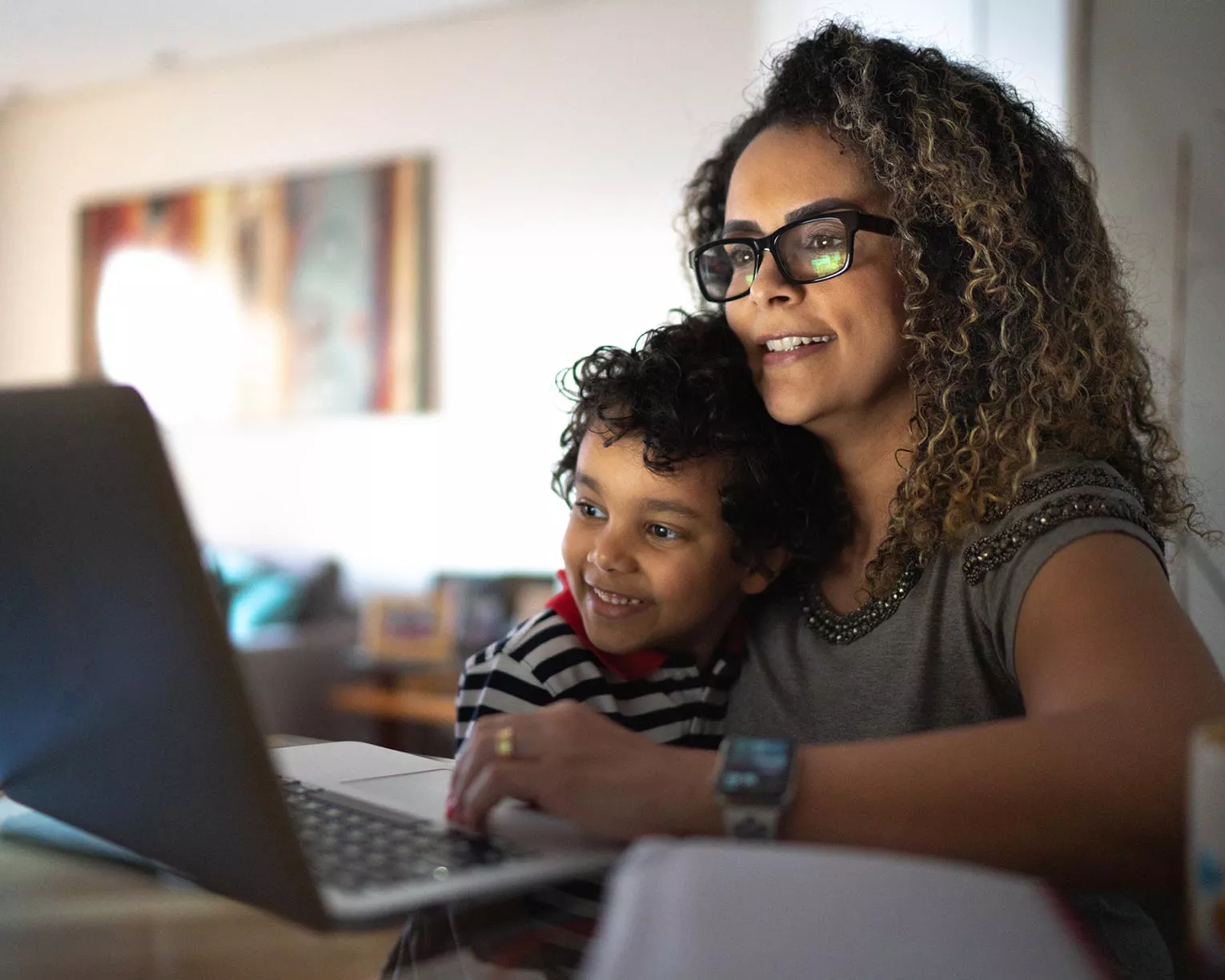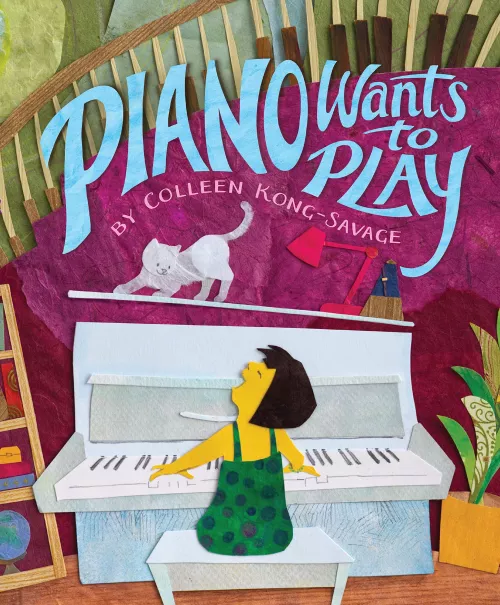Share this book
When Piano and Amy play, readers can see the joyful noise they are making together on the page in Colleen Kong-Savage’s colorful collage. After reading Piano Wants to Play, ask students to think about how Piano feels about Amy. What clues in the story and the artwork tell them what Piano and Amy mean to each other?
Get them thinking about objects that are important to them and that they interact with every day. Do they have a joyful bond with an object like Amy and Piano have? Have them select an object, share what the object is, what they do with it, and why it is meaningful to them. Then, have students use collage to show how they feel about their object.
Start by having students draw or bring in a picture of themselves with their object, which they can use to center their collage. Have them choose a large, solid-colored piece of paper for the background and add their photo or drawing. Or students can cut their background paper into the shape of their important object. Provide construction paper, tissue paper, gift wrap, fabric scraps, glue, shape punches, and scissors to let them express their feelings through texture, color, shape, and design. Let kids cut the other papers or fabrics into different shapes and arrange them to represent their feelings about their object. Once they are happy with their compositions, have them glue the pieces onto the background.
When collages are complete, have students write an artist statement about their work and why they featured their object. Create a gallery for display and a gallery atmosphere by playing some piano music for students as they view the collages and get to know each other better through their creations.
Questions for Discussion or Reflective Writing
- What kind of relationship do Amy and Piano have? How does it change? How does Piano feel about it changing? Have you ever had a friend stop playing with you? How did you feel?
- How does Piano feel about Rupert? What differences do you notice between Amy’s piano playing and Rupert’s piano playing?
Why do you think Amy decided to return to playing Piano once she had grown up? Why do you think she chose to keep Piano instead of buying a new instrument? - Amy and Piano have a special bond. Do you feel a special bond to an object, like an instrument you play, an item of clothing, or something else that is important to you?
- What did you learn about Piano and the feelings Piano experiences from the illustrations in the book?
Related Resources
Activity Guide for Piano Wants to Play from Page Street Kids
Podcast Interview with Colleen Kong-Savage
Cut and Torn Paper Collage from Arts for Learning Northwest
Play with Collage from Tate Kids
More Titles to Try
-
Because
by Mo Willems; illustrated by Amber Ren
-
When Rubin Plays
written and illustrated by Gracey Zhang
-
The Green Piano: How Little Me Found Music
by Roberta Flack with Tonya Bolden
-
Bravo, Little Bird!
By Anni Silvestro; illustrated by Ramona Kaulitzki
-
Dancing Hands: How Teresa Carreño Played the Piano for President Lincoln
by Margarita Engle; illustrated by Rafael López
Join Our Movement


